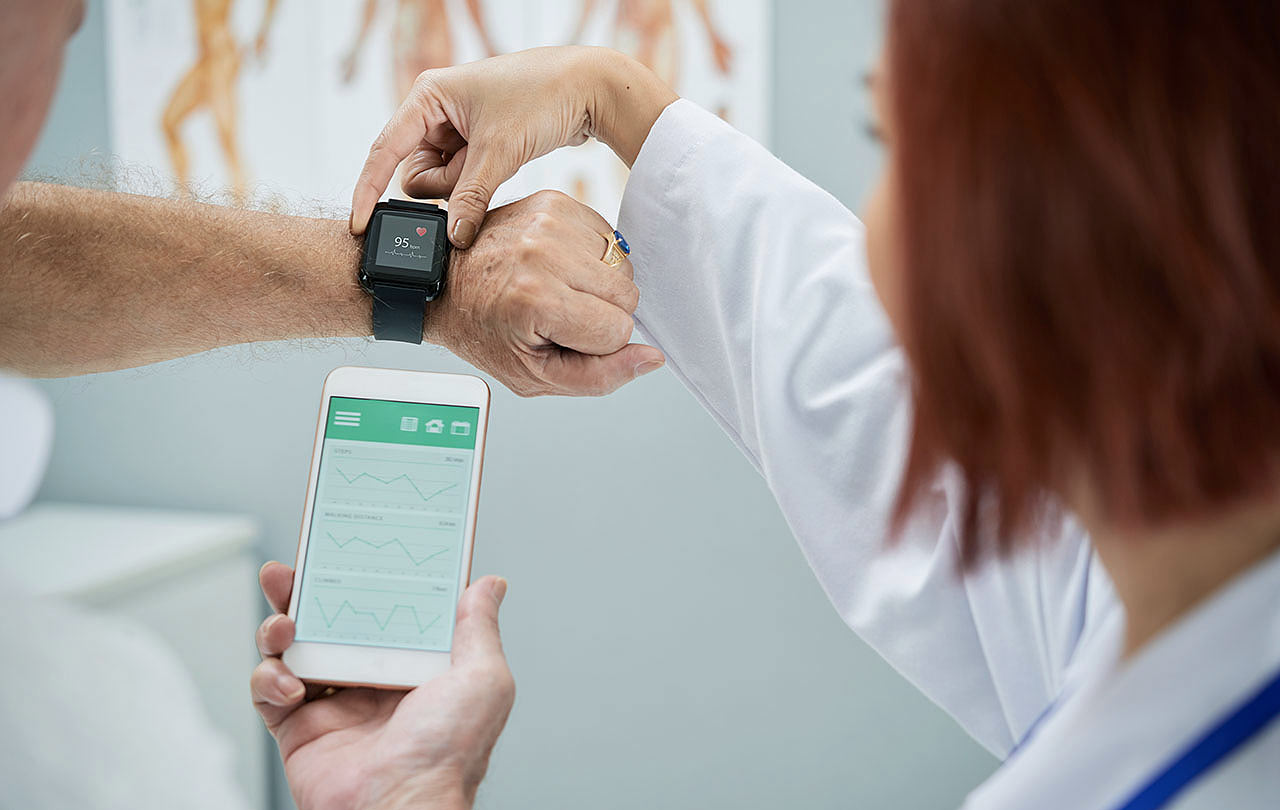In this data-driven age, people are hungrier than ever for insight into their health and wellness – especially in terms of what they can gather from their everyday routine. You’re probably familiar with hearing your colleagues talk about “doing a lap” to get their steps in, but not without their smart watch to count each and every one.
Up until now, people have traditionally used wearables like Apple Watch and Fitbit to track certain activities related to their health and fitness, such as workouts logged, miles run, steps in a day, or hours of sleep. Going to the gym or out for a morning run are no longer enough on their own, not when there are easy ways to track your progress digitally.
These devices have the ability to do much more than just count steps, thanks to embedded sensors and multiple data inputs. With proper processing and analysis, they have the ability to alert users when they need to drink more water or even detect when they have the flu.
The Need for Data Fusion
The biggest players in wearables production continue to work on advanced functionality for the medical market that will not only provide more data on fitness levels, but also determine susceptibility for disease and monitor critical health metrics. It isn’t just about collecting data on individual metrics, though. Wearables need to be able to link up with other devices so it can fuse all of their data, process it and draw conclusions about user health.
A lot of these applications will be huge for disease detection, patient comfort and convenience – hopefully in the near future. With this type of tracking and analysis on a wearable device, it will cut down on invasive testing procedures and frequent visits to the doctor.
Medical Applications for Wearables
Here’s a rundown of some of the most prominent applications for wearables in the health and medical space, currently in the works:
- Athletics: One device that’s currently in development can sense when hydration and electrolyte levels deplete and tell athletes that it’s time to drink more water. Another company, Athos, is embedding sensors inside of clothing to create smart athleticwear that monitors heart rate, breathing and muscle activity. It then delivers all of this data to the user through a smartphone app.
- Diagnostics: One wearable device is currently being studied that could help diagnose Alzheimer’s based on a person’s gait symmetry when they’re walking. Similar devices can monitor blood pressure and other vital signs in people who are at risk of heart disease, to alert them as early as possible if symptoms are developing. Even for generally healthy people, wearables can be used to gain a full picture of their current health that focuses on preventative care and monitoring.
- Elder care and monitoring: Elderly people are one population in particular who are at risk for both accidents and illness. Wearable devices can help people monitor their loved ones, especially those who live alone. Even for those who are susceptible to health problems, they may not have access to at-home care around the clock. A wearable device can monitor vital signs, detect falls and even track daily activity, and then alert other family members or emergency services when there’s an issue.
- Digital medicine: Pharmaceuticals could see some major changes thanks to wearables in medical applications. Proteus Digital Health is a company that provides insight into medication effectiveness and adherence. They track and analyze user data through an ingestible sensor, a small wearable sensor patch and a mobile app.

(Source: CEVA)
Motion Sensors and Sensor Fusion in Medical Wearables
Practically all of these functionalities, and plenty of others in development, rely on data processed from multiple sensors. To track steps, workouts, sleeping habits and even eating and drinking, a particular type of motion sensor, called an inertial measurement unit (IMU), is required.
A common theme in these wearables is motion. Motion data is paired with data from other sensors on the device to understand important context about the wearer and their environment. For example, a heart rate monitor may be paired with data from the accelerometer and gyroscope to track your lifts at the gym. It can then compile data to tell you how much your stability and heart rate improved in concert over time.
Motion data needs to be accurately tracked with pinpoint accuracy – especially dynamic motion – to produce any kind of meaningful insight. Imagine the difference between accurately diagnosing warning signs of disease compared to an overflow of false positives. The differences in sensor output are subtle and important, and tracking that dynamic component of motion is vitally important to correctly processing that data for any of these insights to be made. Getting accurate sensor readings is at the heart of this technology, and a patient’s health.
Without a robust sensor fusion platform, the motion data will be muddled and less useful. Feeding muddled data into an algorithm will only lead to even messier results. Ensuring clean and precise dynamic motion is the toughest part of the sensor fusion equation. This is because properly fusing sensor data of dynamic motion requires a thorough understanding of each sensor’s strengths and weaknesses, and how to merge their capabilities.
Our team at CEVA – Hillcrest Labs has spent over 15 years studying sensors and sensor fusion to push the bounds of dynamic motion tracking with robust sensor fusion to deliver the precision needed for medical wearables. Contact CEVA if you’d like to learn more about how to integrate cutting-edge sensor fusion into your medical wearable device.


